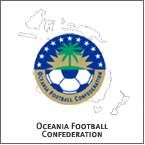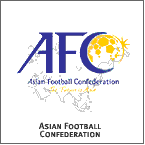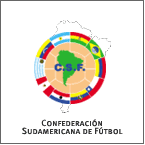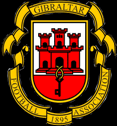Law No. 1- The Field of Play
The field must be rectangular with the touch lines being longer than the goal lines. The length of the field must be between 100 and 130 yards (90-120 meters). The width of the field shall be between 50 and 100 yards (45-90 meters). For international matches, the length of the field must be between 110 and 120 yards (100-110 meters) and the width between 70 and 80 yards (64-75 meters).
In the Laws of 1863, the ground, as it was called could be up to 100 yards wide and 200 yards long.
The goal posts are eight feet apart and the cross bar is eight feet above the ground. The goal posts and cross bars must be white and the goal must be securely anchored to the ground. Nets may be attached to the goal.
Originally, the goal had no cross bar.
Law No. 2- The Ball
The ball must be spherical and made of leather or other suitable material. The circumference shall be between 27 and 28 inches (68-70 centimeters). The ball shall weigh between 14 and 16 ounces (410-450 grams).
The type or size of ball is not mentioned in the 1863 Laws.
Law No. 3- The Number of Players
Each team may have no more than 11 players including the goalkeeper. A match may not start if either team has fewer than seven players.
Up to a maximum of three substitutes may be used in any official competition. In other matches, up to six substitutes may be used.
No limit was set on the number of players in 1863.
Law No. 4- The Players Equipment
Each player is required to wear a jersey or shirt, shorts, socks, shin guards and shoes. Socks must completely cover the shin guards. Goalkeepers must wear a color different from either team or any official. No player may wear any item that could cause danger, including any type of jewelry.
The only stipulations regarding a player’s equipment in 1863 prohibited the use of “projecting nails, iron plates or gutta percha on the soles or heels of his boots.” Gutta percha is a type of rubber.
Law No. 5- The Referee
Each match is controlled by a referee who has full authority to enforce the Laws of the Game. Powers and duties of the referee include controlling the game, ensuring that all equipment meets standards, keeping the official game time and calling any infractions. The decisions of the referee are final.
In 1863, soccer was considered a gentlemen’s game. The original rules did not address any type of officiating. Gentlemen, it was thought, could police their own games.
Law No. 6- The Assistant Referees
Two assistant referees officiate each match. They are positioned along the sidelines and are responsible to indicate when the entire ball has passed out of the field of play. They assistant referees also indicate which team is to take a throw in or corner kick and when a team requests a substitution. The assistant referees call the offside penalty.
Law No. 7- Duration of the Match
A match shall consist of two 45-minute halves, unless the opposing team and the referee agree to alter the duration before play begins. A half-time interval of no more than 15 minutes is allowed. The referee may add time to the game to make up for time lost to substitutions, injuries or other causes.
The original laws did not address the duration of play.
Law No. 8- The Start and Restart of Play
A coin is tossed before the start of play. The team that wins the coin toss chooses which goal it will attack during the first half. The other team takes the kickoff. For a kickoff, the ball is placed in the center of the field. Opposing players must be at least 10 yards from the ball. (A 10-yard circle is marked around the center of the field. At the signal of the referee, a player kicks the ball and play is underway. Kickoffs are used to start each half and after a team scores a goal. At other times when the game is stopped, a dropped ball is used to restart play.
The coin toss and initial kickoff Law has not changed since 1863. In the Laws of 1863, the sides traded goals after each score.
Law No. 9- The Ball In and Out of Play
The ball is out of play when it has wholly crossed the goal line or touch line whether on the ground or in the air, or when play has been stopped by the referee The ball is in play at all other times, including when it rebounds off of a goalpost or an official.
Law No. 10- The Method of Scoring
A goal is scored when the entire ball passes over the goal line between the goal posts and under the cross bar.
The 1863 Law states “a goal shall be won when the ball passes between the goal posts or over the space between the goal posts at whatever height, not being thrown, knocked on or carried.
The team scoring the most goals wins the match. If the teams have the same number of goals, the match is called a draw. If a winner must be determined, for example in tournament play, the following procedures may be used:
- Away goals rule
- Extra time
- Penalty kicks
Law No. 11- Offside
Law 11 is the most controversial and difficult to understand. A player may not camp out near the opposing teams goal waiting for a pass from a teammate. A player is offside if he is closer to the opponents goal that the second to last defender. (The goalkeeper is usually the last defender.) The offside player is only penalized when the ball is actually played forward and the offside players gains an advantage or interferes with the play.
The 1863 rules identified any player on the attacking side who was ahead of the ball before it was kicked as “out of play.”
Law No. 12- Fouls and Misconduct
Referees can award direct or indirect free kicks to the opposing team when a player commits a foul. Law 12 outlines 10 offenses for which a player may be penalized. These include intentionally kicking, tripping, charging, striking or spitting on an opponent. A player is also penalized for touching the ball with his hands.
Referees may discipline a player by displaying a yellow or red card. The yellow card represents a cautionable offense. The red card indicates a sending-off offense and the player is expelled from the match. Receiving two yellow cards in one match also results in being sent out of the game.
Tripping, hacking and pushing an adversary were forbidden under the 1863 Laws. In addition, three of the original laws dealt with using hands on the ball. Holding the ball and running with it were two of the main issues that lead to standardized rules so it is not surprising that three these three laws were included:
- No player shall run with the ball
- A player shall not be allowed to throw the ball or pass it to another with his hands
- No player shall be allowed to take the ball from the ground with his hands under any pretext whatever while it is in play.
Law No. 13- Free Kicks
Free kicks can be either direct or indirect. For both direct and indirect free kicks, the ball must be stationary when the kick is taken and the kicker may not touch the ball a second time until it has touched another player. A goal may be scored by a direct kick. On an indirect kick, another player must touch the ball before a goal can be scored. The referee signals in indirect kick by raising his arm above his head.
In 1863, players could make a fair catch of a ball in the air. The player had to mark the spot of the fair catch with his heel, place the ball on the mark and take a free kick.
Law No. 14- Penalty Kicks
Penalty kicks are awarded when offenses occur with the penalty area in front of the goal. The ball is placed on the penalty mark. The player taking the kick and the goalkeeper are the only ones allowed inside the penalty area. The goalkeeper must remain on the goal line between the posts until the ball is kicked.
Law No. 15- The Throw In
The throw in is used to restart play after the ball has gone out of play along the touch lines (sidelines). The player making the throw in must have both feet on the ground on or behind the touch line. The ball must be thrown over the head with two hands. A goal cannot be scored directly from a throw in. Another player must touch the ball before the player who made the throw in may touch it again.
In 1863, the ball was not considered in play after a throw in until it touched the ground.
Law No. 16- The Goal Kick
The goal kick is used to restart play after the ball has gone out of play along the goal lines and was last touched by the attacking team. The goalkeeper or another player may take the goal kick. The kick must go beyond the penalty box. All players except the keeper and the player taking the goal kick remain outside the penalty area until the ball crosses the line marking the penalty area.
In the original rules, the defending team would put the ball in play with a free kick from the point along the goal line where the ball left the field of play.
Law No. 17- The Corner Kick
A corner kick is used to restart play after the entire ball has bone out of play along the goal line and was last touched by the defending team. The ball is placed inside the corner arc at the nearest flag post. A member of the attacking team kicks the ball into play. All other players must remain 10 years from the ball until the corner kick is taken. The corner kick is a direct kick.
Under the 1863 Laws, the attacking side was entitled to a free kick if a defender sent the ball out of the player over the goal line. The free kick at the goal was taken 15 yards from the goal.







